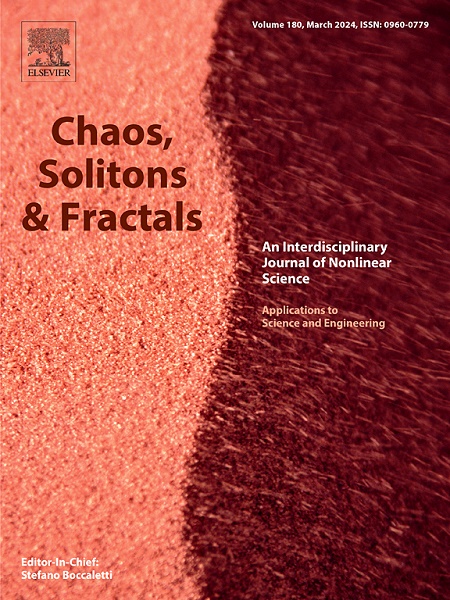Bimodal distribution of path multiplicity in random networks
IF 5.3
1区 数学
Q1 MATHEMATICS, INTERDISCIPLINARY APPLICATIONS
引用次数: 0
Abstract
Erdös–Rényi (ER) random networks have long been central to the study of complex networks, providing foundational insights into network structure and behavior. Despite extensive research on their structural properties, the exploration of path multiplicity in ER random networks — quantifying the number of shortest paths between a random node pair — remains limited. In this paper, we systematically investigate the path multiplicity in ER random networks, including exploring its distribution, average, variance and coefficient of variation through both simulation and analytical approaches. We first observe a bimodal distribution of shortest path amounts between node pairs in ER random networks. As the connection probability increases, the left part steepens and the right part forms a bell-shaped distribution, gradually separating from the left. The mean and variance of path multiplicity reach their maximum values at approximately and , respectively, while the coefficient of variation peaks at low values and then increases monotonically before . These statistical properties highlight significant variations in path multiplicity under different connection probabilities. Furthermore, we examine the behavior of other network metrics in ER random networks, including resistance distance, efficiency, and natural connectivity, and identify distinct differences compared to path multiplicity. These results shed new light on the intricate structural patterns that emerge in ER random networks and provide a deeper quantitative understanding of the factors that govern shortest path multiplicity, contributing to the broader study of random network theory.
随机网络中路径多重性的双峰分布
本文章由计算机程序翻译,如有差异,请以英文原文为准。
求助全文
约1分钟内获得全文
求助全文
来源期刊

Chaos Solitons & Fractals
物理-数学跨学科应用
CiteScore
13.20
自引率
10.30%
发文量
1087
审稿时长
9 months
期刊介绍:
Chaos, Solitons & Fractals strives to establish itself as a premier journal in the interdisciplinary realm of Nonlinear Science, Non-equilibrium, and Complex Phenomena. It welcomes submissions covering a broad spectrum of topics within this field, including dynamics, non-equilibrium processes in physics, chemistry, and geophysics, complex matter and networks, mathematical models, computational biology, applications to quantum and mesoscopic phenomena, fluctuations and random processes, self-organization, and social phenomena.
 求助内容:
求助内容: 应助结果提醒方式:
应助结果提醒方式:


